(This article by Roberta Naas first appeared on Forbes.com.)
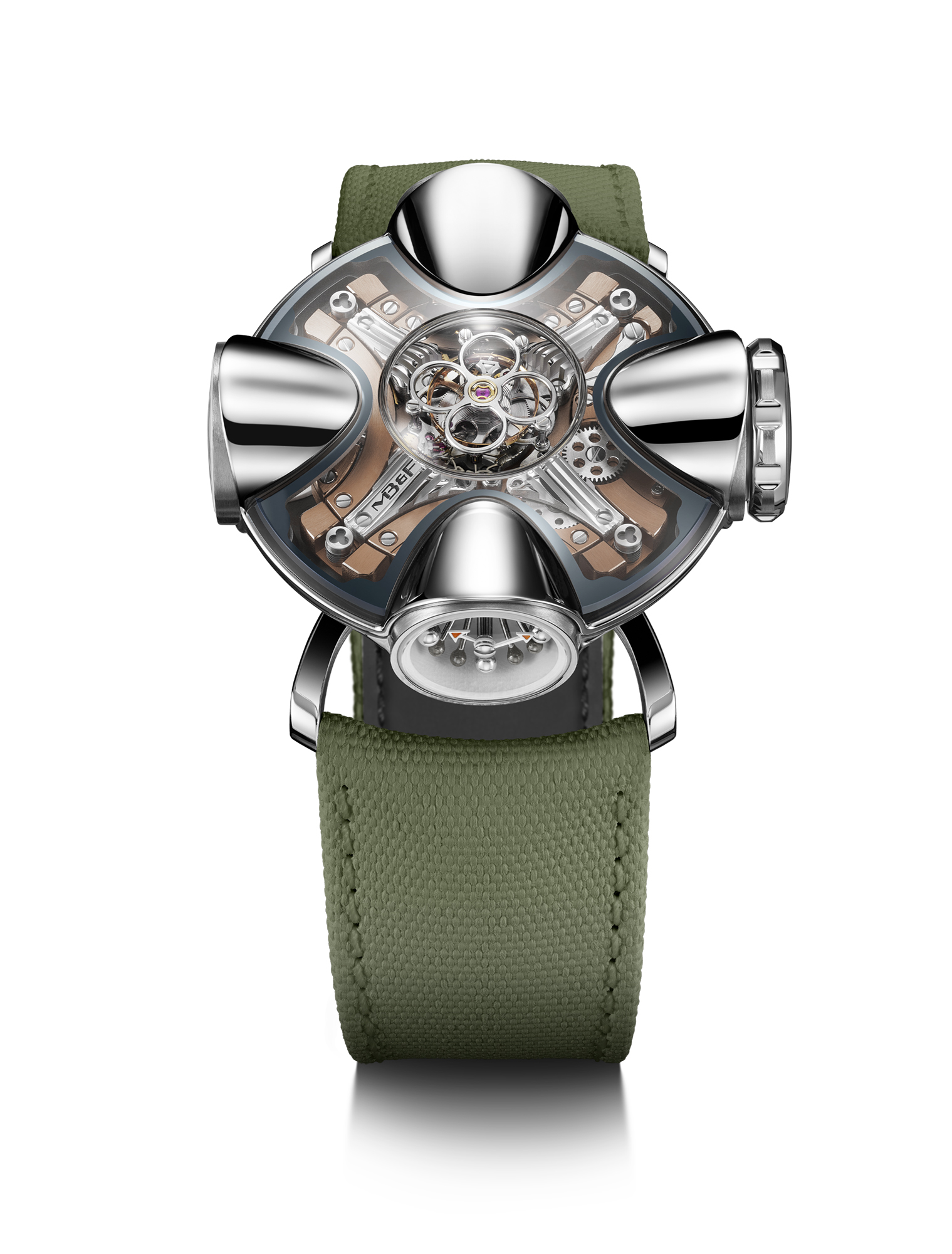
MB&F Horological Machine No. 11 Architect
In Dubai last week, just before Dubai Watch Week, MB&F unveiled its Horological Machine No. 11 ‘Architect’ watch – unlike anything we have seen so far — even from this brand. The three-dimensional timepiece houses the brand’s 21stcaliber and the case is inspired by architecture of the 1960s. It is built like a house, with four separate rooms, each “room” houses a different function. The entire structure rotates on its foundation – delivering power to the barrel and winding the watch. The highly complex case boasts titanium walls and a double-domed sapphire roof. It is being offered in two versions – one with a blue dial plate or one with an 18-karat 5N rose gold dial plate. Just 25 pieces of each will be made.
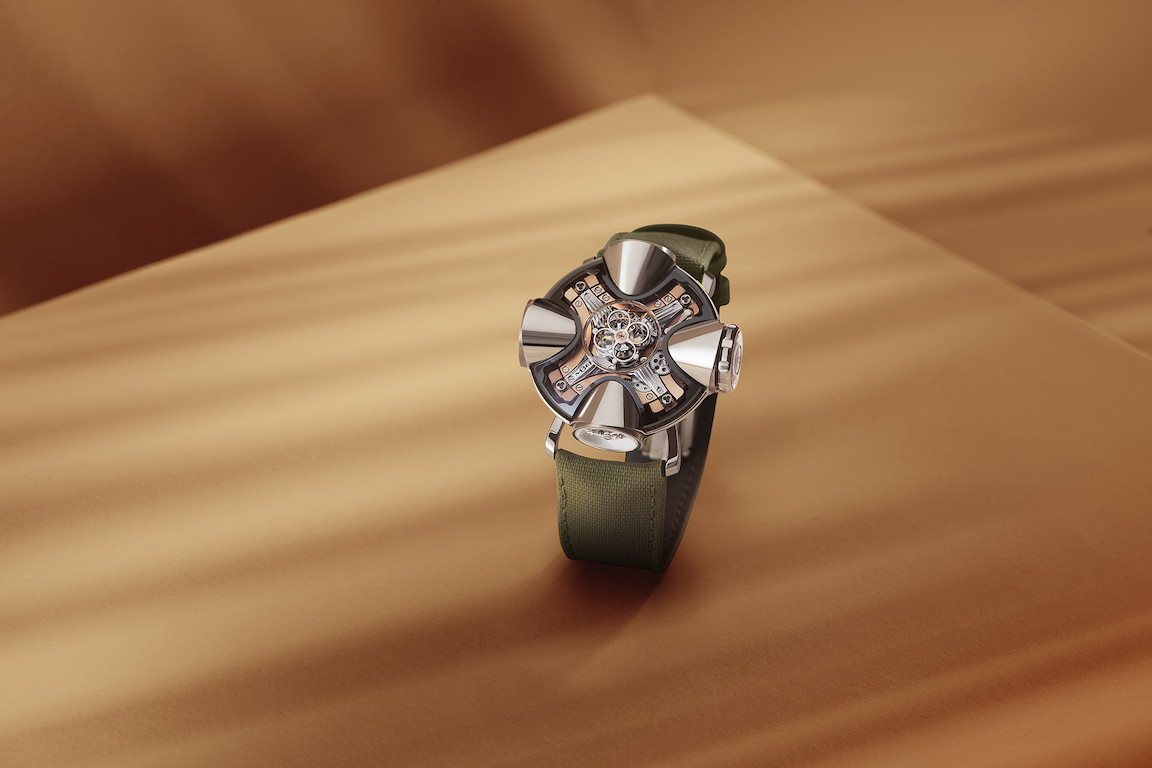
MB&F Horological Machine No. 11 Architect. Photo: Eric Rossier.
Since the advent of MB&F (Maximilian Busser and friends), the Horological Machines at MB&F have consistently pushed the boundaries of conventional watchmaking, blending wild imagination with cutting-edge engineering to create timepieces that are truly art on the wrist – with a little bit of science fiction thrown in. Now, the Horological Machine Nº11 Architect watch moves from some of the themes we have seen by MB&F – space, cars, animals, sea creatures and more – to the concept of building and architecture.
Drawing parallels between the habitable nature of houses and the narrative potential of timepieces, Maximilian Büsser envisioned the Horological Machine Nº 11 as a dwelling. He was inspired by Swiss architect Le Corbusier, who once said, “A house is a machine to live in.” Now, MB&F builds a house for its new caliber to live in and let me say that this is not the house that Jack built—it is definitely the house that Max built.
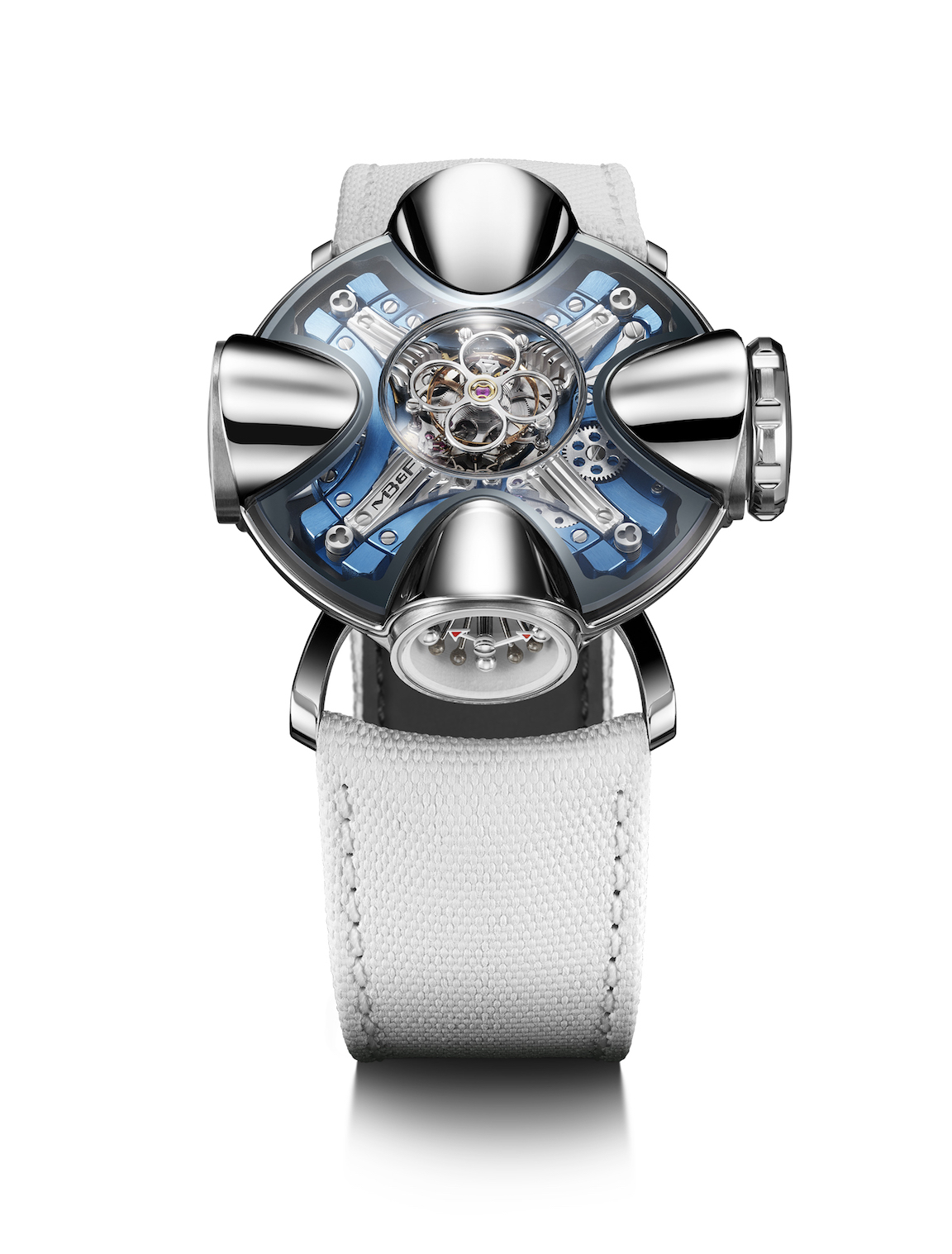
MB&F Horological Machine No. 11 Architect in blue. Just 25 pieces will be made of each version.
Horological Machine Nº11 Architect boasts a central flying tourbillon as the core of the house, supporting the double-domed sapphire roof and the hallways or corridors of the house extend out from there. The four symmetrical cones extend out – jutting past the edges of the 42mmm case with harmonious appeal – each forming a “room” with white walls and a sapphire crystal windowpane. The functions: one displays the hours and minutes using large and small aluminium and titanium orbs in different shades as hour and minute markers with red-tipped arrows pointing to the time.
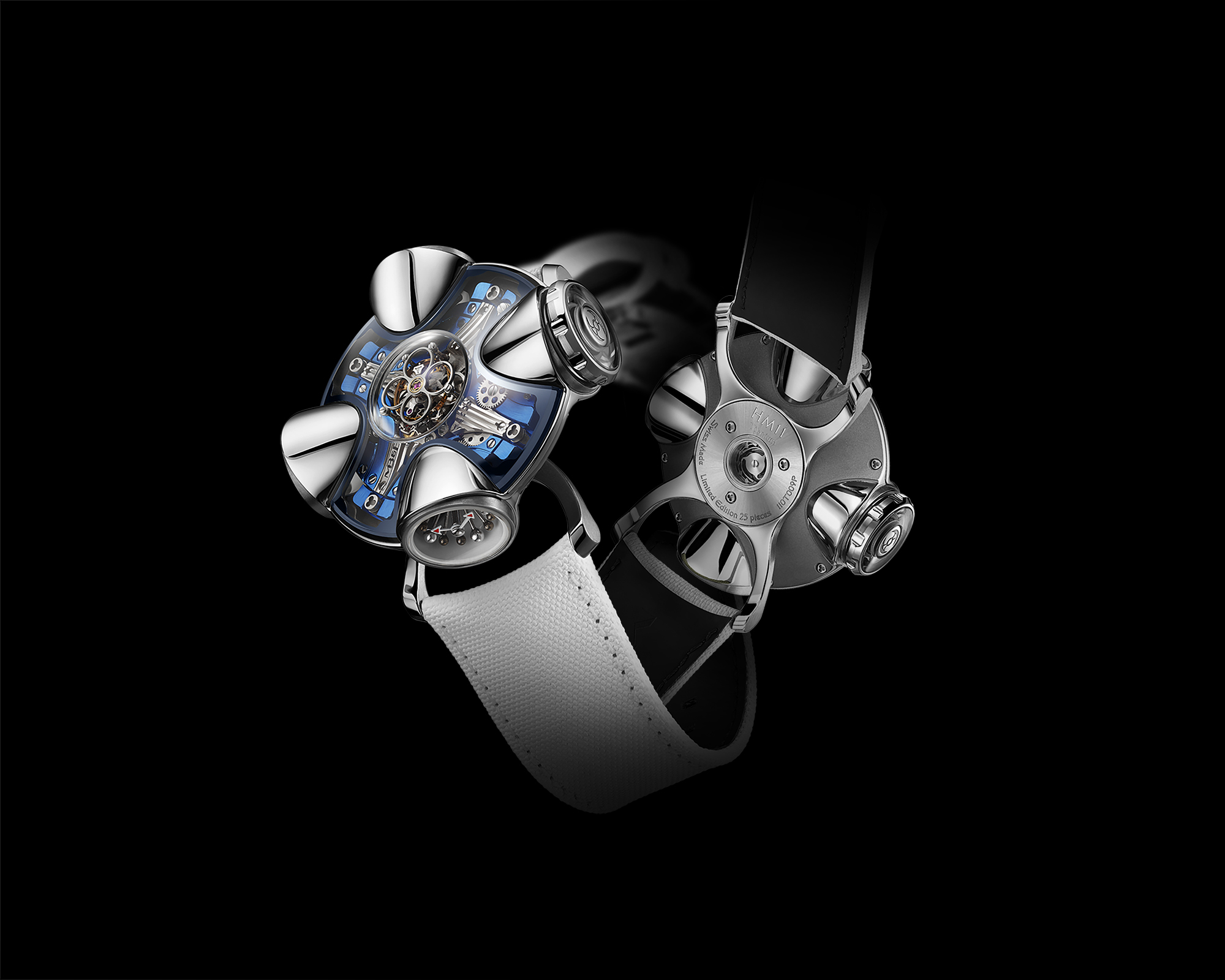
MB&F Horological Machine No. 11 Architect retails for $230,000.
Another room showcases the power reserve display with similar architecture to the time indication room using orbs to indicate the state of reserve. Full power reserve is 96 hours. Residing in another room is a rare mechanical system for a watch: the temperature indication, showcased in Celsius or Fahrenheit. The last room houses an aesthetic feature: a badge engraved with the all-too-familiar MB&F Battle-axe motif. This room acts as the time-setting crown of the HM 11. Pull on the module and it opens with a click – like the front door of a house. The watch rotates on its foundation so that the wearer can arrange the rooms to have the room of choice directly facing him or her. Additionally, the mechanical movement is manually wound by turning the entire case clockwise.
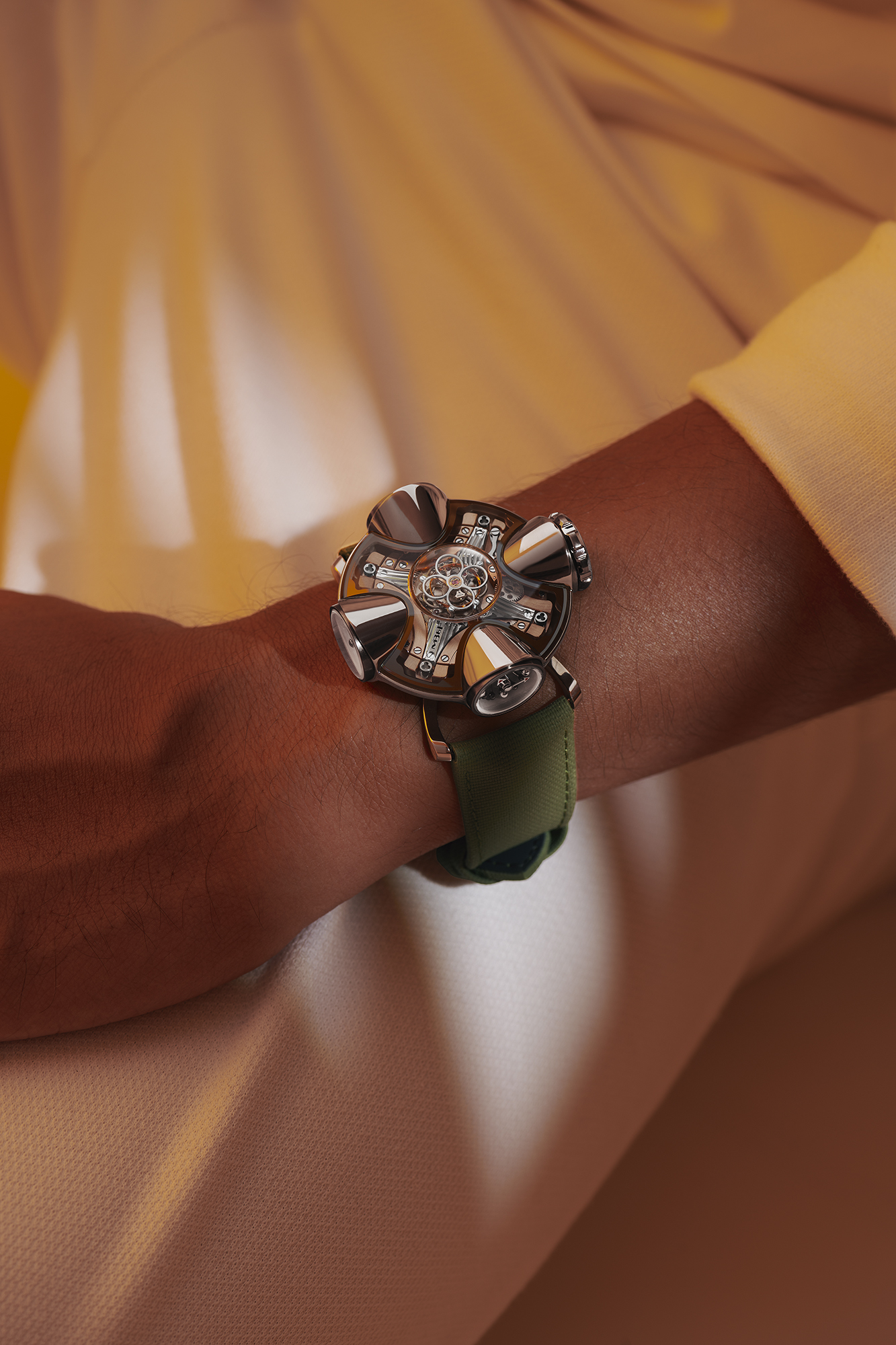
MB&F Horological Machine No. 11 Architect just might be home sweet home.
The entire house is powered by the 364-part HM11 engine that beats at 2.5Hz (18,000 vph). The plates and bridges are colored with physical vapour deposition (PVD) to create an ozone blue hue are in 5N gold. The complex case, that is water resistant to 20 meters, consists of 92 individual parts, including an unprecedented transparent sapphire crown equipped with eight gaskets to ensure its dust and water resistance. In total, the titanium case consists of 19 gaskets and multiple anti-reflective sapphire crystals on top, back and each room display. Each of the 50 pieces retails for $230,000.
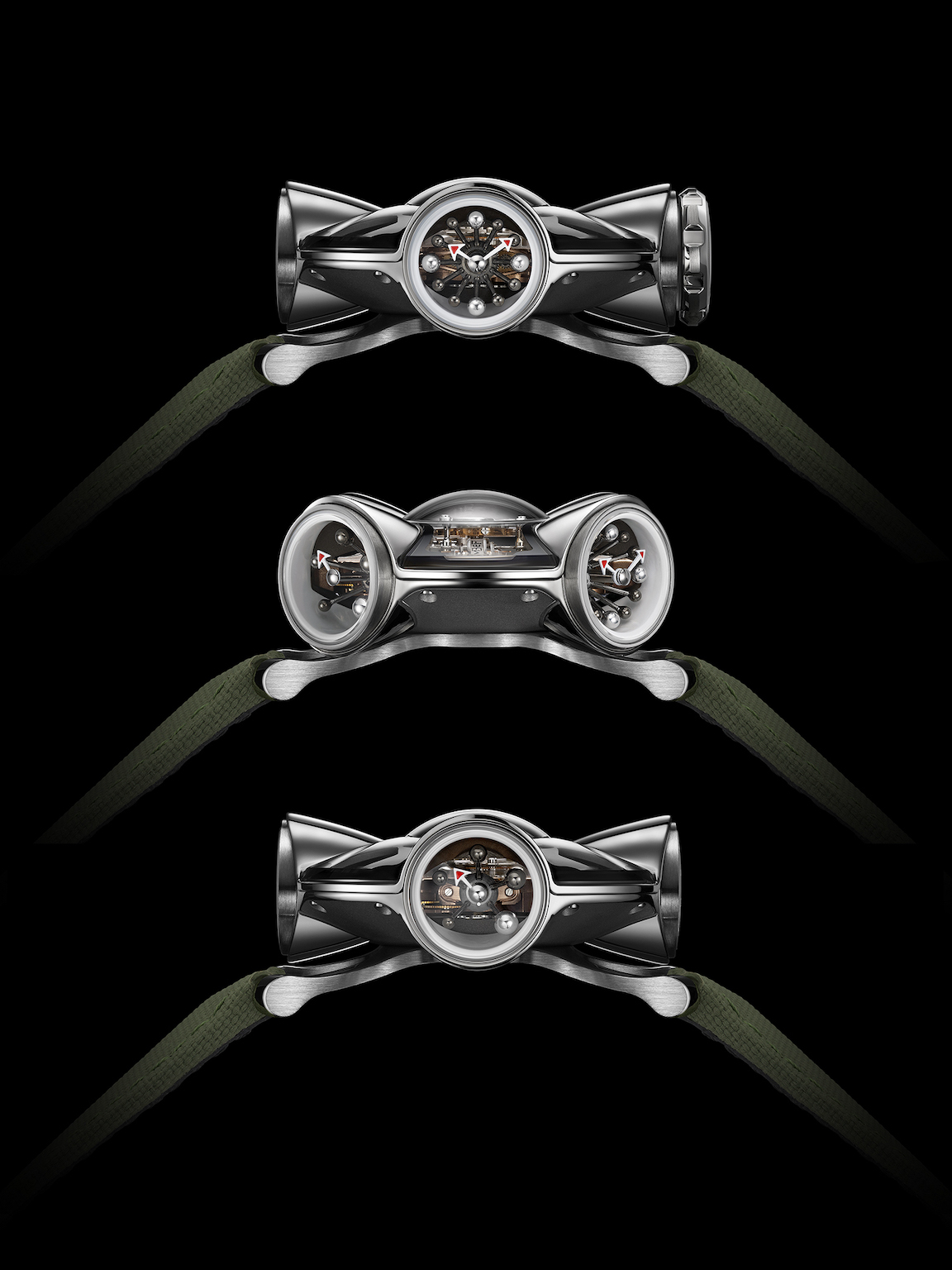
MB&F Horological Machine No. 11 Architect boasts four separate rooms.
So the question now is, did Max and friends go too far with this watch? Is it really a house with rooms or a marketing narrative? Does it matter? I think the idea was original, like most things Max does, and the result is absolutely arresting. Isn’t that what we all really care about. It is art on the wrist. It may be a house on the wrist, too. And if it is, the $230,000 piece translates to home sweet home.





